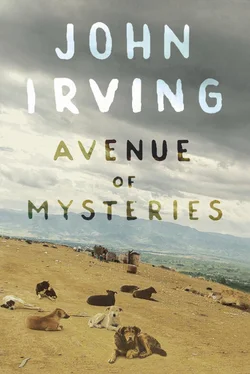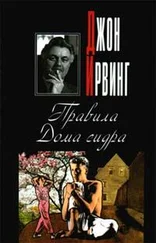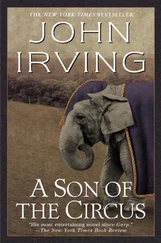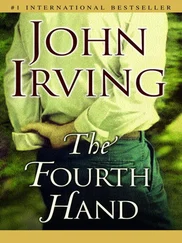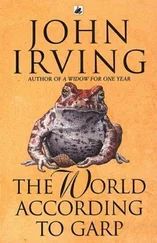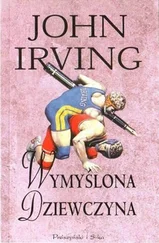Flor was the first to have symptoms; when she was diagnosed, of course Edward Bonshaw would be tested. Flor and Señor Eduardo tested positive for HIV in 1989. That insidious pneumonia Pneumocystis carinii, PCP, was the earliest presentation of AIDS for both of them. That cough, the shortness of breath, the fever — Flor and the Iowan were put on Bactrim. (Edward Bonshaw would develop a rash from the Bactrim.)
Flor had been almost beautiful, but her face would be disfigured with Kaposi’s sarcoma lesions. A violet-colored lesion dangled from one of Flor’s eyebrows; another purplish lesion drooped from her nose. The latter was so prominent that Flor chose to hide it behind a bandanna. La Bandida, she called herself—“The Bandit.” But, hardest for her, Flor would lose the la (the feminine) in herself.
The estrogens she was taking had side effects — in particular, on her liver. Estrogens can cause a kind of hepatitis; the bile stagnates and builds. The itching that occurred with this condition drove Flor crazy. She had to stop the hormones, and her beard came back.
It seemed unfair to Juan Diego that Flor, who’d worked so hard to feminize herself, was not only dying of AIDS, but dying as a man. When Señor Eduardo’s hands were no longer steady enough to shave Flor’s face every day, Juan Diego did it. Yet, when he kissed her, Juan Diego could feel the beard on Flor’s cheek, and he could always see the shadow of a beard — even on her clean-shaven face.
Because they were an unconventional couple, Edward Bonshaw and Flor had wanted a young doctor for their primary care physician, and Flor had wanted a woman. Their pretty GP was Rosemary Stein; she’d insisted they be tested for HIV. In 1989, Dr. Stein was only thirty-three. “Dr. Rosemary”—as Flor was the first to call her — was Juan Diego’s age. At the Virology Clinic, Flor called the infectious disease doctors by their first names — their last names were a nightmare for a Mexican to say. Juan Diego and Edward Bonshaw —their English was perfect — also called the infectious disease doctors “Dr. Jack” and “Dr. Abraham,” just to make Flor feel like less of a foreigner.
The waiting room in the Virology Clinic was very bland — very 1960s. The carpets were brown; the chairs were single or two-person seats with dark, vinyl-coated cushions — Naugahyde, almost certainly. The check-in desk was a burnt-orange color with a light-colored Formica top. The wall facing the check-in desk was brick. Flor said she wished the Boyd Tower building had been nothing but brick, inside and out; it upset her to think that “shit like Naugahyde and Formica” would outlive her and her dear Eduardo.
Flor had infected the Iowan, everyone supposed, though only Flor ever said so. Edward Bonshaw never accused her; he would say nothing to incriminate her. They’d taken no official vows, but they had promised each other the usual. “In sickness and in health, for as long as we both shall live,” Señor Eduardo would devotedly recite to her, when Flor would accuse herself, confessing her occasional infidelities (those return trips to Oaxaca, the partying — if only for old times’ sake).
“What about ‘forsaking all others’—I agreed to that, didn’t I?” Flor would ask her dear Eduardo; she was intent on blaming herself.
But you couldn’t take the lawlessness out of Flor. Edward Bonshaw would remain true to her — Flor was the love of his life, he always said — as he remained true to his Scottish oath, the insane one about “yielding under no winds,” which, idiotically, he couldn’t refrain from repeating in the original Latin: haud ullis labentia ventis. (This was the same lunacy he’d proclaimed to Brother Pepe, the chicken feathers heralding his arrival in Oaxaca.)
In the Virology Clinic, the blood-drawing room was next to the waiting room, which the HIV-positive patients shared, most of the time, with the diabetics. The two groups of patients sat on opposite sides of the room. In the late eighties and early nineties, the number of AIDS patients grew, and many of the dying were visibly marked by their disease — and not only by their wasted bodies, or the Kaposi’s sarcoma lesions.
Edward Bonshaw was marked in his own way: he suffered from a seborrheic dermatitis; it was flaky and greasy-looking — mostly on his eyebrows and scalp, and on the sides of his nose. There were cheesy patches of Candida in Señor Eduardo’s mouth, coating his tongue white. The Candida would eventually go down the Iowan’s throat, into his esophagus; he had difficulty swallowing, and his lips were crusted white and fissured. In the end, Señor Eduardo could scarcely breathe, but he refused to go on a ventilator; he and Flor wanted to die together — at home, not in a hospital.
In the end, they fed Edward Bonshaw through a Hickman catheter; they told Juan Diego that the intravenous feeding was necessary for patients who couldn’t feed themselves. With the Candida, and the difficulty he had swallowing, Señor Eduardo was starving. A nurse — an older woman whose name was Mrs. Dodge — moved into what had been Juan Diego’s bedroom on the second floor of that duplex apartment on Melrose. For the most part, the nurse was there to take care of the catheter — Mrs. Dodge was the one who flushed out the Hickman with heparin solution.
“Otherwise, it will clot off,” Mrs. Dodge told Juan Diego, who had no idea what she meant; he didn’t ask her to explain.
The Hickman catheter dangled from the right side of Edward Bonshaw’s chest, where it had been inserted under his clavicle; it tunneled under the skin a few inches above his nipple, and entered the subclavian vein below the collarbone. Juan Diego couldn’t get used to seeing it; he would write about the Hickman catheter in one of his novels, where a number of his characters died of AIDS — some of them with the AIDS-associated, opportunistic illnesses that had afflicted Señor Eduardo and Flor. But the AIDS victims in that novel were not even remotely “based on” the Iowan or La Loca, The Queen — La Bandida, as Flor called herself.
In his own way, Juan Diego wrote about what happened to Flor and Edward Bonshaw, but he would not once write about them. The dump reader was self-taught, and had taught himself how to imagine, too. Maybe the self-taught part was where the dump reader got the idea that a fiction writer created characters, and that you made up a story — you didn’t just write about the people you knew, or tell your own story, and call it a novel.
There were too many contradictions and unknowns about the real people in Juan Diego’s life — real people were too incomplete to work as characters in a novel, Juan Diego thought. And he could make up a better story than what had happened to him; the dump reader believed his own story was “too incomplete” for a novel.
When he’d taught creative writing, Juan Diego had not once told his students how they should write; he would never have suggested to his fiction-writing students that they should write a novel the way he wrote his. The dump reader wasn’t a proselytizer. The problem is that many young writers are searching for a method; young writers are vulnerable to picking up a writing process and believing there is a one-and-only way to write. (Write what you know! Only imagine! It’s all about the language!)
Take Clark French. Some students stay students all their lives: they seek and find generalizations they can live by; as writers, they want the way they write to be established as a universal and ironclad code. (Using autobiography as the basis for fiction produces drivel! Using your imagination is faking it!) Clark maintained that Juan Diego was “on the antiautobiographical side.”
Читать дальше
